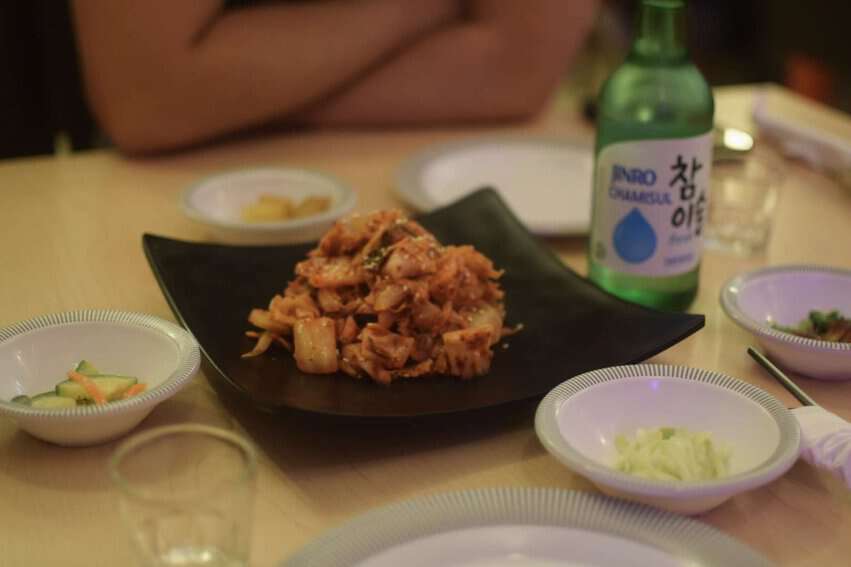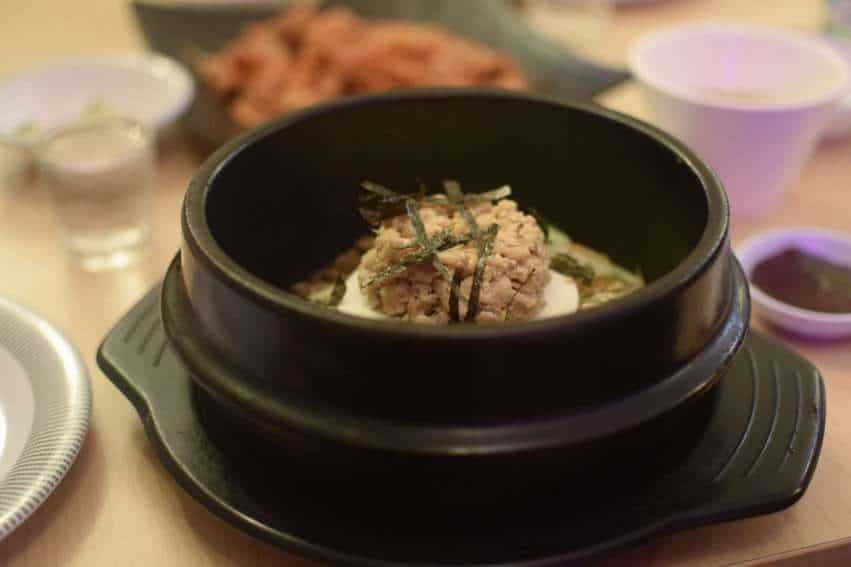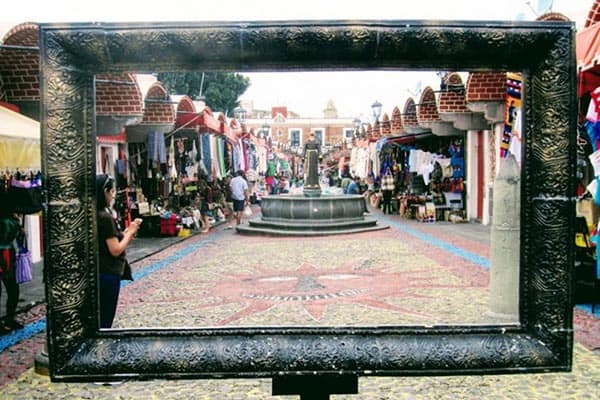
How Korean, German, and Lebanese Immigration Met Strong Indigenous Roots to Shape Merida’s Thriving Restaurant Scene
By Sarah Arksey
Associate Writer
Merida, Mexico’s unique blend of culinary influences may be partially due to its geography.

The city’s position at the tip of the Yucatan peninsula meant that during historic periods where travel by ship reigned supreme, Merida had more contact with overseas nations than it did with the rest of Mexico.
This effect echoed through the city’s immigration patterns as Yucatan’s port cities, such as Progreso, became the arrival point for many foreign populations.
Much of Yucatan’s immigration happened under extremely difficult circumstances. Some immigrants arrived as part of a colonization effort– such as the German families who arrived under Austrian-born emperor Maximilian I’s rule.
Other immigrants arrived to escape occupation– for example, the Lebanese immigrants who docked in Yucatan bearing Ottoman Turkish passports. Still, others arrived as indentured laborers– such was the case with many who arrived from Korea.
These paths to immigration– often traumatic for both immigrant and indigenous communities– led to a strong desire for all to retain cultural identity, and one way of accomplishing this was through the preservation and sharing of recipes.
Distinct Yucatecan Flavors

Many dishes that have come to simply be known as “Yucatecan” are a fusion of immigrant and indigenous ingredients and recipes. One example is Kibis, a falafel-like dish born from Lebanese and Mayan recipes.
Served with a side of cooling, onion-heavy pico de gallo, this satisfying dish is served vegan at Museo Gastronomica Yucateca (MUGY), but is often made with beef to create a sort of starch-heavy meatball.
As the name suggests, MUGY is not only one of Merida’s most popular restaurants but also hosts a small museum containing samples of traditional Yucateca ingredients, such as maize and cacao. Tours are offered daily, after which visitors can see for themselves how these
ingredients come together by trying out traditional recipes like cochinita pibil (slow-roasted pork) or brazo de reina (tamales made with beloved local leafy green chaya and hard-boiled egg).
My favorite part of this experience is the pumpkin dip which comes free and served with tortilla chips to every table– so even if you already ate, it’s worth stopping in for a cocktail!
If you’re eager to continue on the museum track, just head to the (free!) Museo de la Ciudad de Merida. In addition to information about Korean, German, and Lebanese contributions to Yucatecan gastronomy, recent and historic immigrant contributions to arts and culture are also highlighted.
When I visited in January 2024, I enjoyed a full-floor exhibit of Serge Barbeau’s fashion photography. Barbeau originally hails from Montreal, Canada, but has spent much of his professional life in Merida as well as New York, Milan and Paris. I was also able to view a collection of gorgeous dresses designed by Georgia Charuhas, who immigrated to Merida from Chicago and stayed for more than three decades.

Yucatecan and Lebanese fusion at Salon Gallos
Salon Gallos is so much more than a restaurant, though it does serve up delicious Lebanese-Yucatecan fusion dishes. The former oat mill boasts a cinema, art gallery, clothing store, and natural wine bar.

“Walking through the streets of Mérida, looking for a special location, the wife of one of the partners asked about renting the space of an old oat Factory. The place was available– and the partners began to conceive a cultural space where gastronomy and cinema could meet,” explained marketing rep Carlos Hoyos.
When asked about Salon Gallos’ gastronomical process, Hoyos said: “When deciding the type of menu, we did not want to only be another Yucatecan restaurant so we realized that the Lebanese community had greatly influenced several dishes that were already eaten traditionally in Merida; such as the kibis, the tabbouleh, the labne.”
His #1 recommendation? “One of our favorite dishes is Lebanese paella, which uses black recado as the main condiment, also mixing local proteins such as venison, Mayan octopus, chestnut and Valladolid sausage.”
During my visit, I sampled the labneh con tomatoes, which was a refreshing, creamy iteration of the Middle Eastern dish served with crispy tortilla-style pita for dipping. Other dishes which highlight this fusion include a tabouleh made with a local achiote paste known as red recado, as well as the beloved yucateca leafy green chaya.
Still another option is Xec, a traditional Yucateca salad made with jicama (known as the “Mexican turnip”), given a Lebanese nod with garlic chips and yogurt sauce. We finished off with an order of Fresca de Romero ice cream made with rosemary, lime zest, olive oil, and salt.
Korean and German immigration and influence

Merida has seen over 100 years of Korean immigration, and this has left an indelible mark on the city’s culinary and cultural landscape. In 1905, the first 1,033 Korean nationals set out across the Pacific Ocean, having grown wary of the threat of Japanese invasion and with the promise of lucrative work in Mexico.

They were assigned heavy, exploitative labor harvesting henequen on haciendas across Yucatan for a four-year contract– which, upon culmination, saw them unable to return to their homeland, as it was now officially under Japanese occupation. So, they made their homes and built their families in the Yucatan, many settling in Merida.
Korean Grill and Ice Cream serves up traditional dishes like bibimbap and bulgogi, best paired with generous helpings of delicious
soju! The “ice cream” is perhaps the restaurant’s biggest draw, which is a dairy-based dessert made of flavored shaved ice and condensed milk.
Condensed milk is thought to have originated neither in Korea or Mexico, but in the United States, gradually spreading across the globe as it became popular with sailors due to its ability to stay fresh throughout long journeys.
Today, condensed milk is a staple in both Korean and Mexican gastronomy– cross-cultural commonalities like this may have aided in the blending of Yucatan’s native and foreign cuisines!

We decided to skip the shaved ice cream in favor of an equally delicious dessert choice across the street, Marquesitas La Nueva Tradición. This establishment also offers a unique frozen dessert with shaved ice as the base, but their flagship offering is a Yucatecan delicacy– the marquesita, a crepe-like dessert typically filled with condensed milk, chocolate, or cheese.
Allegedly, marquesitas originated in 1930 at “Helados Polito” in Merida, Yucatan. Owner Leopoldo Mena noticed sales dropped in the winter, so he wanted to make a warm, comforting dish from the wafers he had available.
After first trying a stew– not a big seller!– he searched for the perfect ingredient for 15 years, and in 1945 came across Edam cheese or Queso de Bola, introduced to Mexico by Dutch settlers. Thus, the perfect sweet and savory combination was born!
If you’re looking for an authentic taste of Germany, head to La Bierhaus– an immigrant-owned pub serving up delicious classics like currywurst and goulash washed down with pints of hefeweizen and glasses of riesling.
Interestingly enough, Germany also has a relatively high proportion of Mexican immigrants, with the 4th highest Mexican population in the world!
- The Rise of E-Scooters, E-Bikes, and More - August 31, 2024
- Merida, Mexico’s Fascinating Culinary Mosaic - August 24, 2024
- Transport and Logistics in Switzerland: 3 Incredible Innovations - August 21, 2024





